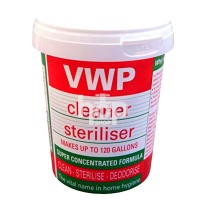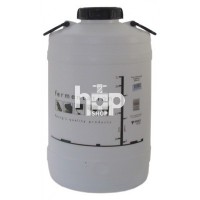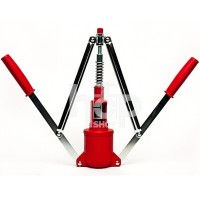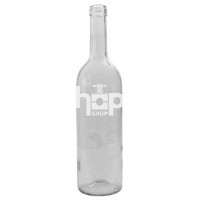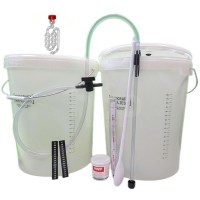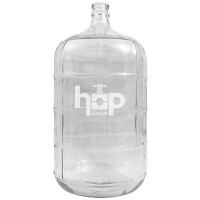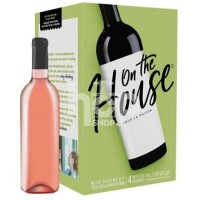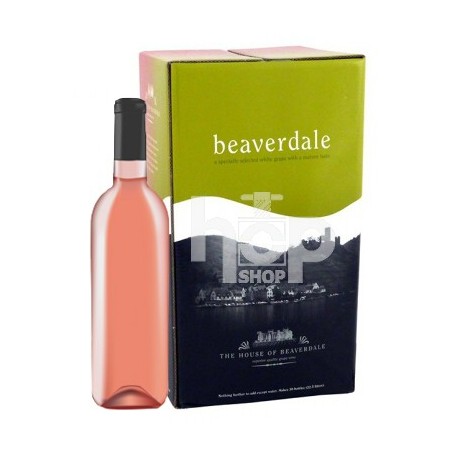
Beaverdale Blush - 30 Bottle Wine Kit
Beaverdale Blush Wine Kit (30 Bottle)
Right then, fancy making a nice, easy-drinking rosé at home? This Beaverdale Blush wine kit is a really solid choice, especially if you're just getting started or you just want something dependable without any drama. It's one of those kits that just, well, works.
Pretty much everything you need is packed in the box – the juice concentrate, the right yeast, clarifiers, the lot (obviously you supply the water and the gear!).
It's designed to turn out 30 bottles of very pleasant rosé without you needing to be some kind of expert winemaker. It's quite forgiving, which is always nice.
Flavour Profile: Beaverdale Blush Rosé
You're aiming for a classic Blush style with this kit – think proper Rosé. It's light, crisp, and genuinely refreshing, especially when served nicely chilled.
Expect those lovely summer berry notes, like strawberry and maybe a touch of raspberry, but it manages to stay nicely balanced and not too sweet.
While it won't be a super complex wine, it delivers a really pleasant, smooth drinking experience with a clean finish.
It's perfect for casual sipping, especially in warmer weather, and pairs great with lighter foods. Just a solid, enjoyable homemade rosé.
What You’ll Need to Make It
You don't need a ton of complicated stuff beyond the kit itself, but you do need the basic winemaking gear.
If you're brand new to this, grabbing a winemaking starter kit is probably the easiest way, as it bundles most of the essentials.
Otherwise, double-check you've got:
- A fermenting bucket or vessel (needs to hold at least 25 litres) with a lid and airlock
- A long spoon or paddle (plastic or stainless steel) for stirring
- A hydrometer and trial jar (essential for checking fermentation)
- Siphon tubing for transferring the wine cleanly
- Cleaner and Sanitizer – seriously, don't skip this, it's crucial!
- About 30 x 750ml wine bottles and closures (corks or screw caps)
- A corker if you're using corks
Kit Specifications
| Style: | Blush / Rosé |
| Sweetness: | Off-Dry |
| Body: | Light-Medium |
| Oak: | None |
| ABV: | 11.5% Approx. |
| Grape Skins: | No |
| Labels Included: | No |
| Juice Volume: | 6 litres |
| Ready: | 3-4 Weeks (to bottle) |
| Final Yield: | 23 litres (approx. 30 x 750ml bottles) |
A Winemaker’s Tip
Here's something useful for this rosé: try to keep an eye on your fermentation temperature. Rosé wines really hold onto those lovely delicate fruity flavours best if they ferment a little on the cooler side. Have a look at the yeast's recommended range in the instructions, but generally, aiming for around 18-22°C is a good shout.
If it gets too hot, you can sometimes lose some of those nice aromas, resist the temptation to bottle it the second it looks clear.
Giving it an extra week or two to settle and clear properly after fermentation finishes often makes a noticeable difference to the final clarity and smoothness.
Patience is definitely a virtue here!
Frequently Asked Questions
- How long does it really take to make?
- You'll likely be ready to bottle this wine in about 4 to 6 weeks from starting it. It's drinkable fairly soon after bottling, but honestly, like most kit wines, letting it sit in the bottle for another month or two really helps it mellow out and taste its best.
- Is this wine sweet or dry?
- It's generally considered 'off-dry'. So, it's not bone dry like some wines, but it's definitely not properly sweet either. It has a nice fruity character balanced by good crispness, which makes it really easy and pleasant to drink.
- Is this Beaverdale kit hard for a beginner?
- Not at all. Beaverdale kits are well-known for being very beginner-friendly. The instructions included are usually clear and easy to follow. As long as you pay close attention to the cleaning and sanitising steps (that's the most important bit!), you should find it pretty straightforward.
- Do I need to add extra sugar?
- Nope, you typically don't need to add any extra sugar during the main fermentation for these Beaverdale kits. The grape concentrate already has all the necessary sugars for the yeast to work with. Just follow the instructions regarding adding water.

